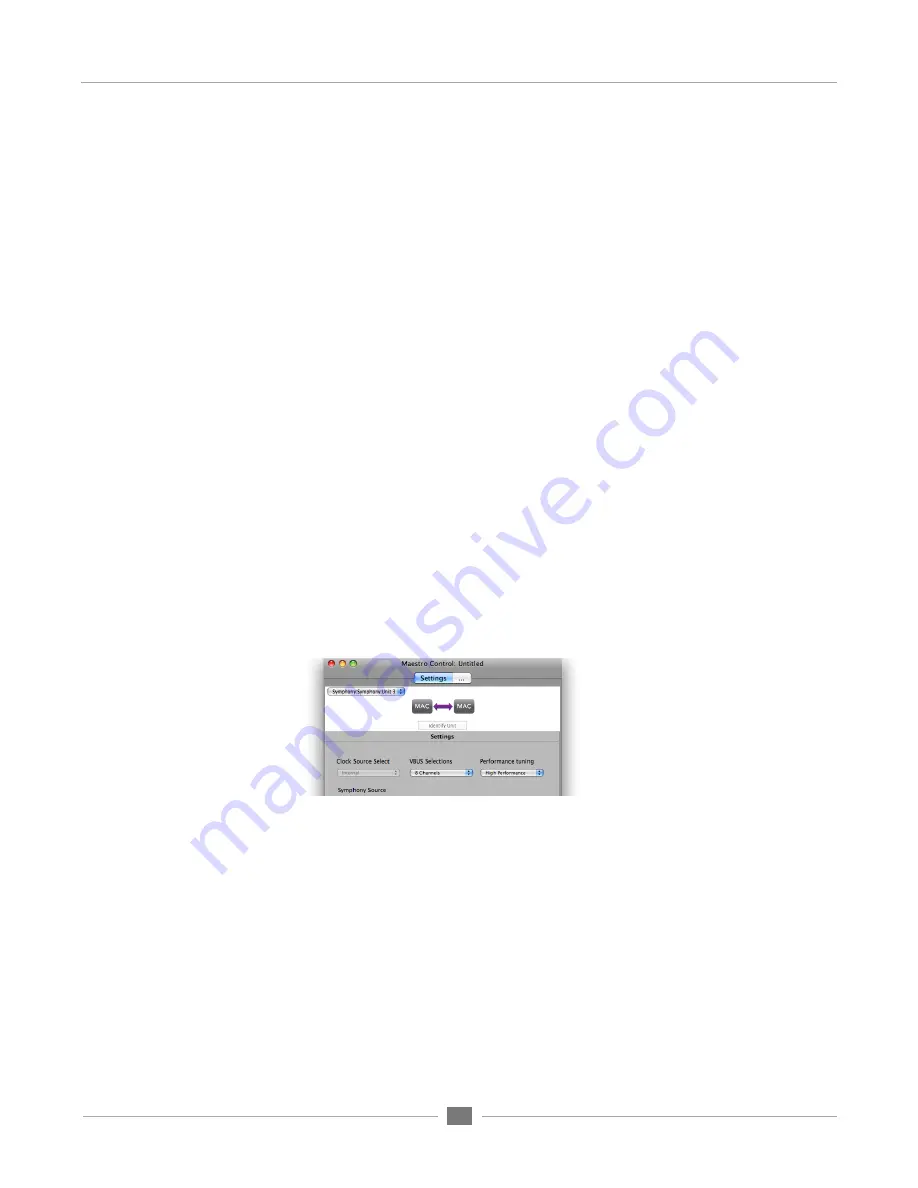
APOGEE ELECTRONICS
14
Symphony64 PCI card –
User’s Guide
Configuring Multiple Macs with SBus
Make PC-32 Connections
Designate one Mac as the “primary” computer, and connect at least one hardware interface to port 1
(Master card, Channels 1-32 port). DO NOT connect hardware interfaces to port 1 of any other Mac in
the system – port 1 should be used for SBus (Mac to Mac) connections only. Either hardware or SBus
connections may be made to any other available port.
These PC-32 connection details are depicted in Figure A at right.
Make Hardware Clock Connections
Even if hardware interfaces are connected to more than one Mac, make sure that they're all locked to a
common sample clock, as explained on page 6.
Set Symphony Source
Set
Symphony Source
on both Macs to enable connected ports. Be sure not to enable unconnected ports,
as interfaces won’t be detected correctly in Maestro. Please see page 8 for more detail concerning the
Symphony Source
setting.
Set Software Sample Rate
Set the sample rate of both Macs to the same frequency. This may be done by opening a DAW session or
by opening the OSX utility Audio MIDI Setup, setting
Properties For
to
Symphony 64
, and setting
Format
to the desired sample rate.
Verify in Maestro
Open Maestro and verify that all hardware and SBus connections have been detected correctly. To check
for SBus connections, open the Maestro Control window and choose
Symphony:Symphony
in the
Interface drop down menu. The Mac to Mac icon shown below should appear.
Choose Symphony 64 Input and Output Labels
By choosing Maestro's default input and output labels in your DAW software (as described on page 10),
the assignment of SBus connections becomes as simple as choosing an SBus output on one Mac and
choosing the same number SBus input on the second Mac.
If your DAW software doesn’t accept the Maestro labels, the
Symphony Source
setting is helpful to
determine which software inputs and outputs correspond to SBus connections. For example, if hardware
is connected to ports 1 and 2 and a second Mac is connected to port 3, the required
Symphony Source
setting is
PCI Cards 1-2, Port 1-3 (CHANNELS 1-96)
. Keeping in mind that each port has 32 channels,
channels 1-64 correspond to hardware inputs and outputs and channels 65-96 correspond to SBus inputs
and outputs.
Summary of Contents for Symphony 64
Page 1: ...User s Guide V2 May 2011 PCIe Card for Apogee Interfaces...
Page 2: ......
Page 4: ......
Page 15: ...APOGEE ELECTRONICS 11 Symphony64 PCI card User s Guide Figure A Figure B...
Page 17: ...APOGEE ELECTRONICS 13 Symphony64 PCI card User s Guide A B C...
Page 39: ...APOGEE ELECTRONICS 35 Symphony64 PCI card User s Guide...
Page 41: ...APOGEE ELECTRONICS 37 Symphony64 PCI card User s Guide 6 8 7...
Page 43: ...APOGEE ELECTRONICS 39 Symphony64 PCI card User s Guide Input Pane Figure 2 Figure 1...
Page 45: ...APOGEE ELECTRONICS 41 Symphony64 PCI card User s Guide Output Pane 1 2 3 1a...
Page 47: ...APOGEE ELECTRONICS 43 Symphony64 PCI card User s Guide 1 2 Maestro Mixer Window...






























